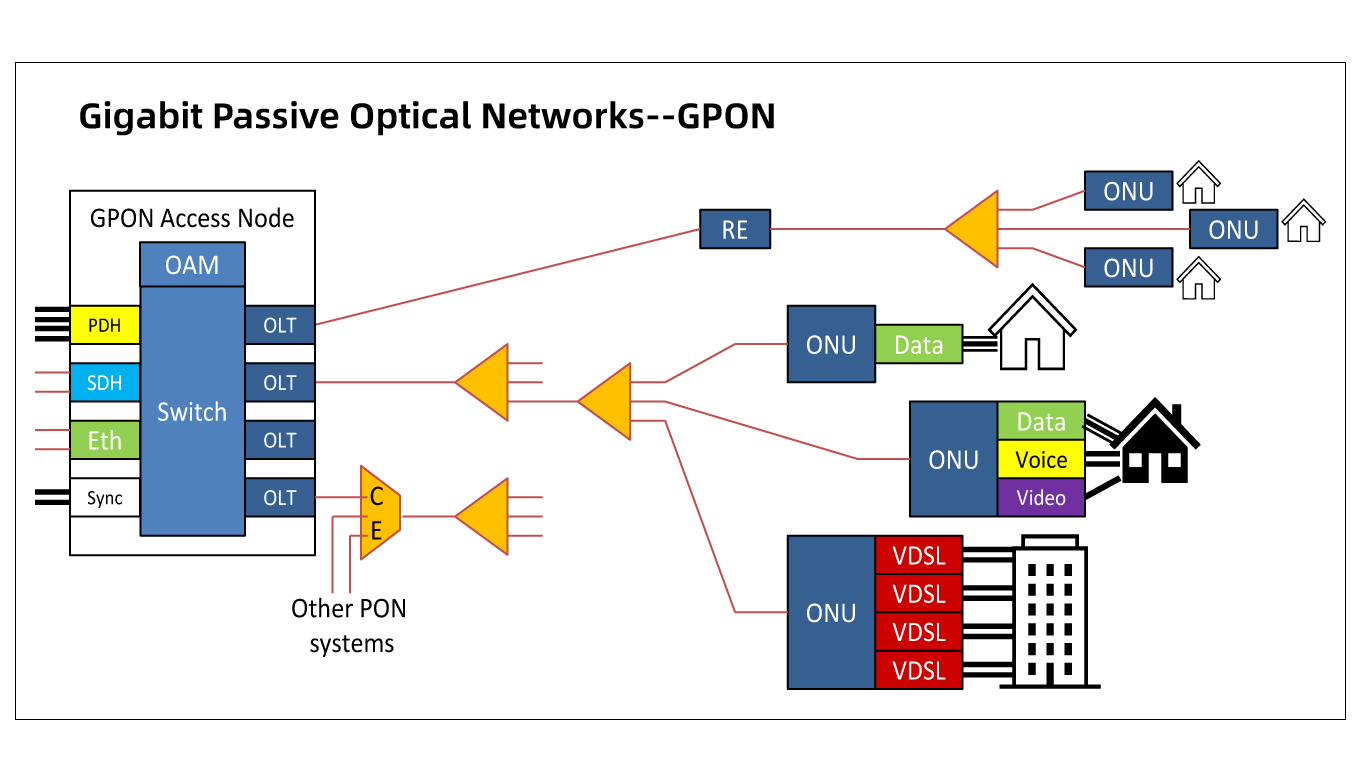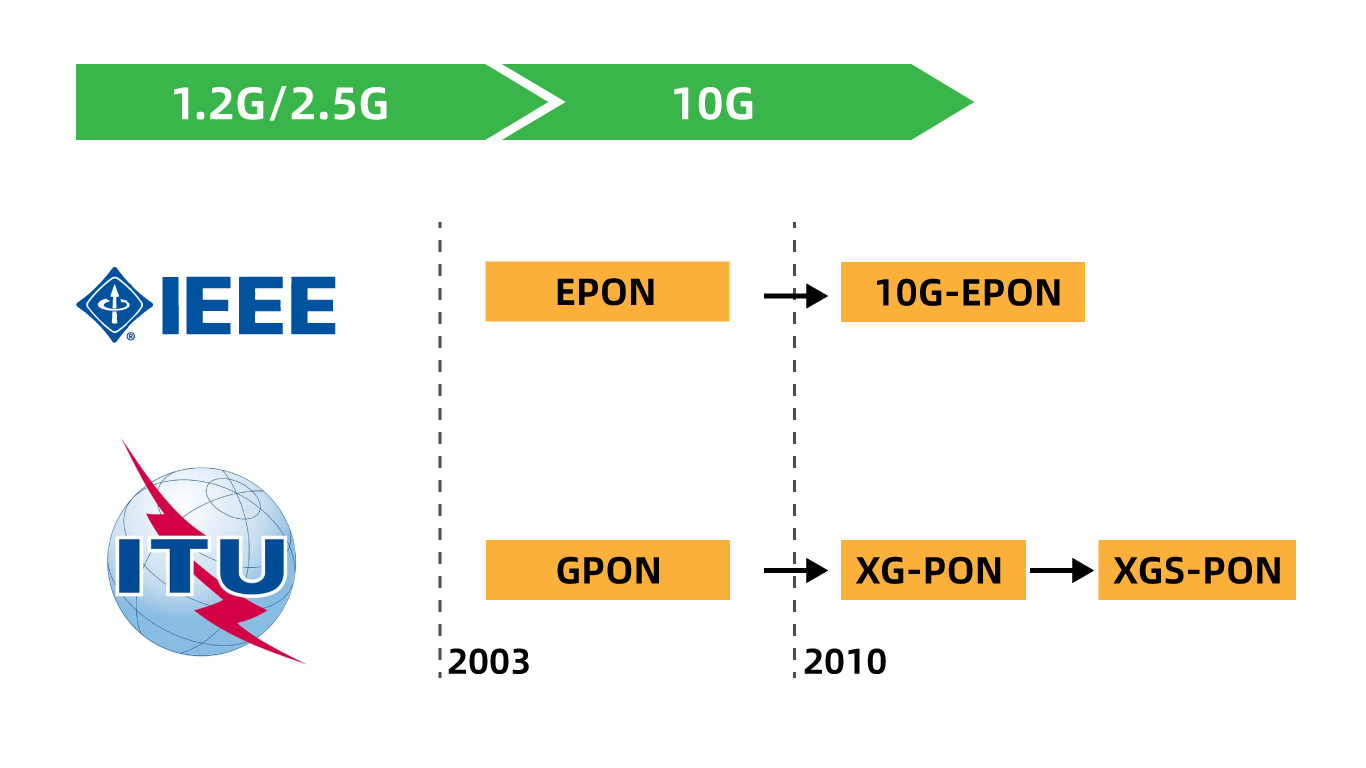- Utilizes the ITU-T G.984 standard.
- Based on the IEEE 802.3 standard.
- XPON is a broad term encompassing GPON, EPON, and other substandards.
- Complies with ITU-T G.9807 standard, providing symmetric 10 Gbps rates.
- Adheres to ITU standards, supporting a 10 Gbps transfer rate.

- Downstream rates up to 2.5 Gbps, upstream rates up to 1.25 Gbps.
- Provides symmetrical rates of 1 Gbps.
- Specific rates depend on whether it adopts GPON, EPON, or other substandards.
- Provides symmetric rates of 10 Gbps.
- Supports a 10 Gbps transfer rate.

- Utilizes wavelength division multiplexing, supporting up to 64 users.
- Uses time division multiplexing, also supporting up to 64 users.
- May adopt GPON, EPON, or other technologies depending on deployment.
- Utilizes wavelength division multiplexing, supporting symmetric 10 Gbps rates.
- Uses wavelength division multiplexing, supporting a 10 Gbps transfer rate.
- Similar latency performance suitable for common residential and business applications.
- Generally exhibits lower latency while providing higher data rates, making them suitable for latency-sensitive applications like VR and AR.
- Primarily used for common broadband access in homes and businesses.
- Suited for larger enterprises, data centers, and applications with high bandwidth and low latency requirements.
- Employ basic encryption and authentication mechanisms.
- Typically feature more advanced security protocols to meet higher-level security requirements.

Each optical network technology has unique characteristics and suitable applications. GPON and EPON are well-suited for general broadband access, while XPON, XGS-PON, and 10GPON are more appropriate for enterprises and specific high-speed, low-latency applications. The choice of technology depends on factors such as network scale, performance requirements, and future scalability considerations.